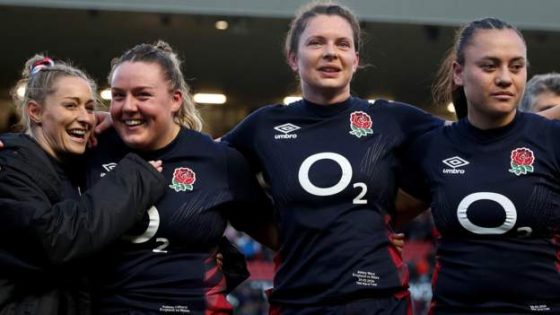Canada has been dodging its commitment to NATO for a decade. It may not be able to hold out for much longer.
Over the past several years, Ottawa has become an outlier among the 32-member alliance. It has failed to hit domestic military spending goals, has fallen short on benchmarks to fund new equipment and has no plans to get there.
It’s a stance that has frustrated allies far and wide — from the White House to the halls of Congress to capitals all over Europe.
And it’ll be on members’ minds when they gather this week in Washington for the NATO Summit, where they are expected to press Ottawa to come up with the cash while warning that things could get much worse if Donald Trump returns to the White House.
“What’s happening now that everyone is spending more, the fact that the Canadians aren’t even trying has become obvious,” said Max Bergmann, a former State Department arms control official.
It’s perhaps surprising that Canada is a laggard on spending even though it’s proven to be a strong ally in other arenas, from its purchase of U.S. weapons to its close coordination with the U.S. in defending North America to its deployment of troops to Iraq and Afghanistan.
But interviews with a half-dozen diplomats from NATO countries make clear that when it comes to defense spending, allies are fed up.
“They’re going to continue to be obstinate” because there is no real penalty for failing to meet the alliance goal, said one U.S. congressional staffer, who like others quoted in this story was granted anonymity to speak freely about a close ally. “Europeans are frustrated that they’re being criticized and Canada is not feeling the same pressure from Washington.”
One of the 12 founding members of NATO, Canada readily signed the 2014 pledge to spend 2 percent of GDP on defense in the wake of Vladimir Putin’s seizure of Crimea in Ukraine. The alliance as a whole might have been slow to get there, but this year, 23 of the 32 NATO members will hit the mark as fears grow along the alliance’s eastern front over Putin’s plans.
Two of the holdouts are Canada and Belgium, both of which are not only failing to meet the 2 percent goal but also the requirement to spend 20 percent of that on new equipment.
Unlike Canada, however, Belgium says it’ll get there by 2035. When will Canada? They won’t say.
The Canadian case is particularly frustrating, the diplomats say, because of Ottawa’s seeming lack of urgency, despite significant problems with its aging military equipment and its strong economy. Its military is so underfunded that half of its equipment is considered “unavailable and unserviceable” according to a leaked internal report.
“The Canadian public doesn’t really see the need,” said Philippe Lagassé, Barton chair at Canada’s Carleton University. “If forced to choose between defense spending, social programs or reducing taxes, defense would always come last. So there’s no political gain to meeting the pledge.”
Canada’s stance prompted a bipartisan group of 23 U.S. senators to take the exceedingly rare step of sending a letter to Prime Minister Justin Trudeau in May saying they were “concerned and profoundly disappointed that Canada’s most recent projection indicated that it will not reach its 2 percent commitment this decade.”
And the situation could get much worse if Trump is elected.
While Trump targets Germany and France have pledged billions more in weapons buys and are upgrading their armed forces, years of underinvestment have left Canada’s military underequipped and unready. And if the former president comes back to the White House, he’ll notice.
Yet Canadian politicians’ seeming indifference to the situation was on full display in April when Trudeau’s government released a new defense policy that gets to only 1.7 percent by 2030.
The report led some in the alliance to single out Ottawa for criticism given the country’s strong economy, lack of debt load and leading position on a variety of international security issues.
And their stance sets a bad example for others.
“I do think what Canada is doing is making it easier for European countries to go slow on getting to the mark,” one European diplomat said.
One diplomat from another NATO country said that U.S. officials have often singled out Canada in discussions as a country that isn’t doing enough to outline a path to the 2 percent, pointing to the increasingly sorry state of the Canadian arsenal as what can happen without more investment.
“There has been a clear push from the Americans that burden-sharing is very important. They’re saying it in a general way, though they have pointed to Canada specifically” as a country failing to keep up with the majority of the alliance, the official said.
The view from Washington, the congressional staffer said, is that “everyone has to make tough decisions” on how to spend on defense, even wealthy nations like Canada. “That is called being a leader. And we’re not seeing Canada do that.”
In a brutally candid interview on Canadian television in June, Canadian Chief of the Defence Staff Gen. Wayne Eyre said that underinvestment in defense means that “the military that we have right now is not ready to counter the threats that we see coming.” Asked about the lack of a plan to hit 2 percent, he added “I do not defend that, and nobody in uniform defends that.”
At the NATO Summit in Washington, it will be made clear that “2 percent is not the ceiling, it’s the floor,” for what countries are expected to contribute to their own defense budgets, the diplomat from the NATO country said. Countries such as the U.S., Poland, Norway and Estonia have already pushed past 3 percent, or have publicly shared plans to get there,
Since the Trump years, and especially since Russia’s full-scale invasion of Ukraine, “there’s an expectation of sharing the burden and seriousness about defense that Canada is not meeting,” said an official from a NATO state that has pushed well beyond the 2 percent threshold.
“Allies who do not spend at least 2 percent of GDP on defense seriously undermine their own credibility and common deterrence posture,” an adviser to one NATO defense ministry observed, noting that the failure of a small and dwindling coterie of nations to even outline a path to get there has serious political consequences in the United States and beyond.
The failure to meet the standards set by Brussels “is used as a pretext to attack NATO and Europe by those members of the American foreign and security community who opt for either ‘China first’ strategy or belong to the isolationists camp,” the official said. “Such a policy fundamentally undermines trust towards those allies. If they don’t have sufficient determination today, I am not optimistic about their behavior if we had a direct war between Russia and NATO.”
On a visit to Washington in May, new Defense Minister Bill Blair pushed back on criticisms that Canada had no intention to join the 2 percent club.
“I’m hoping that when we return to Washington for the July summit that we’ll be able to reassure our allies that Canada understands its obligations,” he told reporters.”There’s more to do. We’re going to do more, we have to do more. … I want to be able to assure allies we’re doing the work now. We’ve got our heads down. We’re still going hard on this. We know there’s more to do.”
Canada does have a story to tell, and it’s not all bad news.
From 2016 to 2017, Ottawa’s defense budget more than doubled from US$13.5 billion to US$29 billion, led by purchases of 88 U.S.-made F-35 fighter jets, 16 Poseidon P-8A surveillance aircraft, and the early work on a huge project to build 15 frigates for the navy that will be built in Canada.
“Canada is committed to reaching the NATO target of spending 2% of GDP on defense,” Daniel Minden, spokesperson for Blair, said in a statement when asked for comment.
A new defense policy document outlines additional investments to get Canada to 1.7% of GDP by 2030, “meaning that we will have nearly tripled Canada’s defense spending since 2014. In fact, we will be increasing defense spending by 27 percent over the course of the next year alone,” Minden added.
“There remains more work to do,” he said. “Canada is determined to meet its commitments.”
Canada’s NORAD Modernization Plan, released in 2022, invests an additional US$38.6 billion over 20 years in the joint Canada/U.S. air and missile defense effort.
Canadian officials are also looking to invest in a new class of submarines to replace its aging — and rarely operational — Victoria-class submarines. Ottawa is considering both conventionally powered and nuclear-powered models built by a variety of international partners, but there are no firm plans in place to do so, making any potential spending on new submarines still years away.
Despite this, Canada is also failing on a second NATO metric. As part of the 2 percent pledge, nations also agreed to spend 20 percent of that on new equipment purchases. Canada and Belgium are the only countries that continue to fail to do so.
While Poland is pouring tens of billions into buying American and South Korean tanks, multiple rocket launchers and fighter planes, Germany is increasing production of armored vehicles and artillery shells, and small Baltic nations are using their minuscule budgets to design and build new drones and are pooling resources to purchase long range missiles systems and air defenses, Canada is still reluctant to spend.
Unlike other countries, Canada can’t complain about a flat economy or ballooning debt.
“Canada is always talking about how responsible it is because of the debt to GDP ratio,” Lagassé said. “So if you keep talking about how successful you are financially and fiscally, people go, ‘OK, well, then you have room to do more.’”
Kyle Duggan contributed to this report from Ottawa.
Source Agencies


